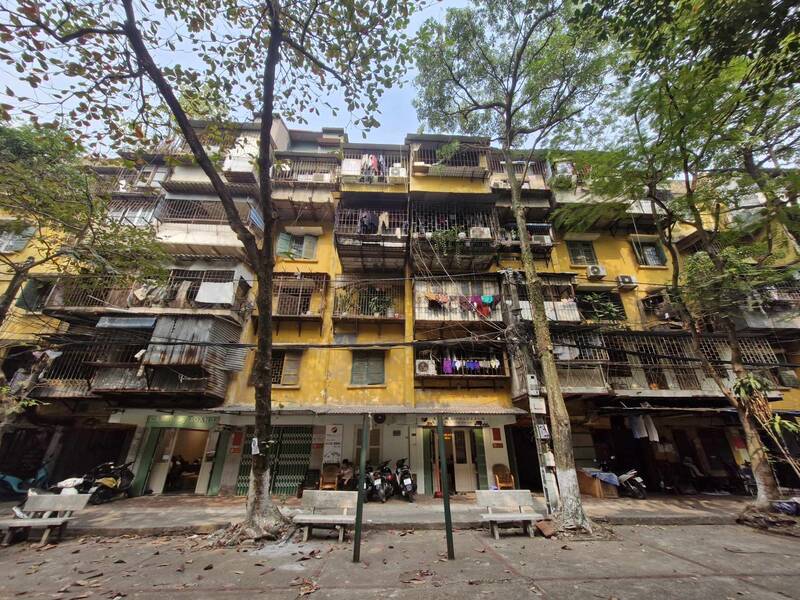Built in the 1970s, after more than half a century of use, Nghia Do apartment building (Cau Giay district) is seriously degraded and emitting a foul smell.

Mr. Nguyen Van Trung (name changed upon request, living in Nghia Do apartment building) said that this apartment building consists of 2 blocks of houses built during the subsidy period.
To increase the usable area, most households here have had to expand and build solid "tiger cages" for kitchens, bathrooms, and places to dry clothes, causing the overall structure of the house to become distorted, deformed, and at risk of fire, explosion, and collapse...

"After many years of use, the apartment building has seriously degraded. Not only that, the skylight space here has turned into a place to discharge wastewater and garbage from households," said Mr. Trung.
It is hard to imagine that this is the image of a collective housing area located in the center of Cau Giay district. Ms. Tran Thi Ha (living in the collective housing area) shared that the current state of degradation and pollution has caused many households here to move to other places to live, leaving behind apartments that look like abandoned houses.

Investigation by Lao Dong reporters showed that previously, the Hanoi People's Committee and Cau Giay District People's Committee had approved the investment and construction project to renovate houses A and B of Nghia Do collective housing area since 2013.
The total investment of the project is expected to be about 995 billion VND, with the implementation period calculated from the first quarter of 2013 and completed and put into use in the first quarter of 2016. However, up to now, the project is still inactive.

According to the plan, in the period of 2021 - 2025, Hanoi City will renovate 10 old apartment buildings and collective housing areas with level D danger level, concentrated in 4 inner-city districts.
Referring to the difficulties in renovating old apartment buildings, Deputy Director of Hanoi Department of Construction Mac Dinh Minh recently analyzed that the basic problem in districts and towns today is the issue of planning.
According to the Capital's General Construction Plan and Urban Zoning Plan, some apartment buildings have a current status that is not suitable for planning, such as many old apartment building locations that are planned to be green areas, parks, low architectural planning standards of 1-5 floors, and current population higher than planned population.
In particular, due to the limitations of the number of floors in the building and the planned population, it is difficult to ensure investment efficiency, not attractive to investors to participate in the renovation and reconstruction of apartment buildings, and it is also difficult to inspect and evaluate the quality of apartment buildings.
According to the leader of the Hanoi Department of Construction, most of the projects being implemented are behind the approved schedule. The reason is that the investors have not yet agreed on compensation, support, temporary housing, and resettlement plans because the owners of old apartment buildings and collective houses have requested compensation levels that are too high, and the investors cannot balance their finances effectively.











